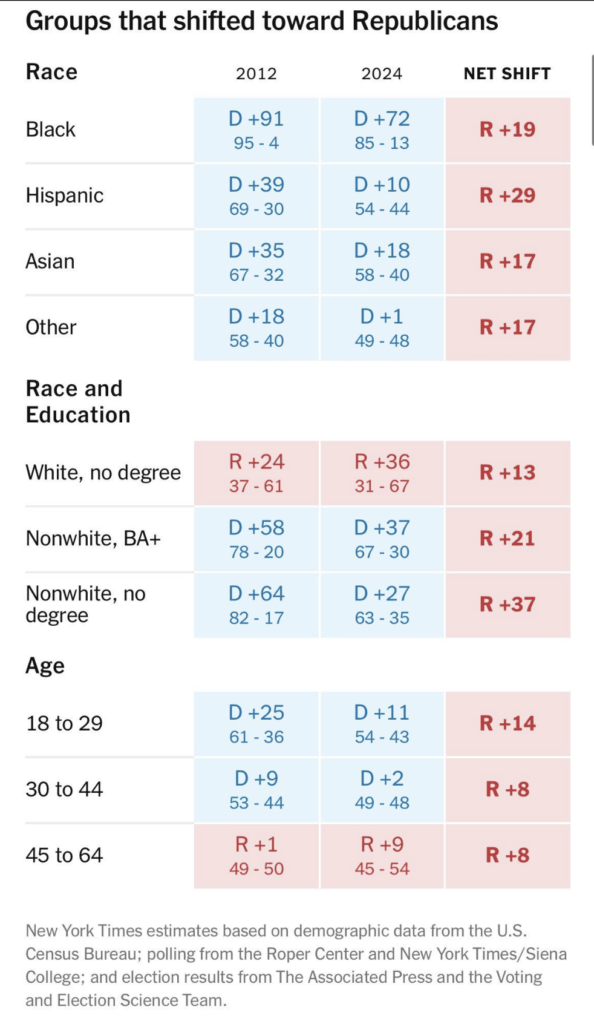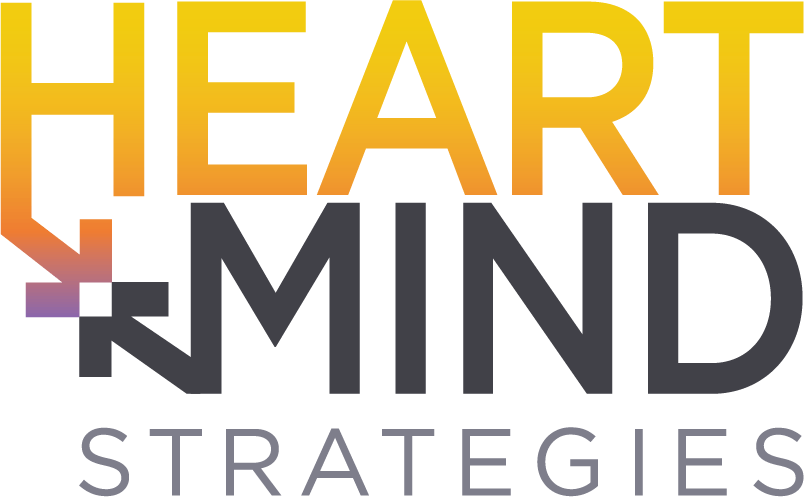Voter Sentiments: A Nation Divided
In the wake of the 2024 election, a pivotal moment reflecting deep economic and political shifts across the United States, Heart+Mind Strategies hosted an insightful webinar titled “Voter Voices for What’s Next in 2025.” This event, held on November 20, 2024, was led by Bruce Blakeman, head of Heart+Mind’s Public Policy and Issues Practice. The webinar provided a platform to dissect the election results and explore future implications through the lens of recent voter data.
Bruce was joined by two distinguished guest speakers: Dr. Chad Moutray, the chief economist for the National Restaurant Association, and Marc Lampkin, Co-Chair of the Government Relations Department at Brownstein Hyatt Farber Schreck, a DC-based lobbying firm. Together, they offered diverse perspectives on voter sentiments, economic disparities, and anticipated policy directions under a new Republican Congress. The discussion centered on three critical themes: how voters perceive the country’s trajectory post-election, the economic realities of what Dr. Moutray termed “Two Americas,” and the legislative landscape expected from a Trump administration paired with a Republican-majority Congress.
Shifting Voter Priorities in the 2024 Election
Bruce Blakeman unveiled critical insights from Heart+Mind Strategies’ Voter View survey, which collected data during the week of the election. As Blakeman highlighted, this election was a classic “economic pocketbook” election, reminiscent of Dr. Richard Wirthlin’s strategic focus on working class Democrats moving to Ronald Reagan in 1980 and 1984. (Note: Heart+Mind Strategies is the reconstitution of Dr. Wirthlin’s firm Wirthlin Worldwide).
Heart+Mind’s data revealed a stark negative perception about the country’s direction, with 78% of Trump voters and even a majority of Harris voters believing the nation is on the wrong track. This overwhelming sentiment of dissatisfaction created a fertile ground for political transformation. The wrong track number, which has been higher than the right direction number for several years, traditionally spells trouble for the incumbent party.
The issue agenda was dramatically different from previous elections. Economic issues were at the forefront of voters’ minds. High inflation and prices were overwhelmingly cited as primary concerns, overshadowing other issues like democracy and immigration:
Top Voter Concerns
- High Prices and Inflation (24%, nearly 2-to-1 most important issue)
- Democracy in the US (14%)
- Immigration and the US/Mexico border (14%)
- Jobs and Economy (13%)
- Abortion – Pro-Choice (9%)
Notably Absent: Traditional Democratic stronghold issues like education, social security, healthcare, and race relations were conspicuously missing from voters’ top concerns.
This shift indicates a growing urgency among voters to address immediate economic hardships over long-term policy goals.
Similarly, according to Heart+Mind’s data, top challenges currently faced by voters are mainly financial ones, including the affordability of the cost of living, increased energy expenses, and housing and healthcare costs.
Because of this hyper focus on economic issues, Trump demonstrated significant margins of gain over Harris among voters experiencing some of these economic hardships:
- +19% among those citing cost of living affordability as their biggest challenge
- +38% among those citing energy/gas affordability
Additionally, we saw Trump succeeding among demographic groups that typically lean Democrat:
- Black Voters: Trump secured 23% overall, with 34% of black males voting Republican
- Hispanic Voters: Trump won 51%, including a +11-point margin among Hispanic males
- Low-Income Voters: A near-even split, contrary to historical Democratic dominance
The New York Times reports similar demographic shifts:

RELATED: Skipping the Presidential Ballot
The “Two Americas”: Economic Disparities
Dr. Chad Moutray introduced the concept of “Two Americas,” highlighting the growing economic divide affecting voter behavior. This divide is characterized by differing experiences with economic challenges such as cost of living, energy expenses, and healthcare affordability. On the one hand, you have Americans who are homeowners, investors, and who can continue to comfortable spend; on the other hand you have Americans who can’t afford to buy a house, don’t own stocks, and are low income who are feeling financially squeezed.
Dr. Moutray explained, “When you look at it through that prism of the two Americas…it explains that split screen story of the economy where you can have an economy that is not in a recession, it’s not going in a recession in the next year my view, and yet you have a lot of Americans who think we are in a recession.” As we saw in Heart+Mind’s data, Trump voters were more likely to report personal struggles with these issues, reflecting a broader narrative of economic disenfranchisement among certain demographics.
Dr. Moutray provided an economic forecast for 2025, emphasizing potential recovery paths amid persistent challenges. He noted that while some sectors might experience growth, others could continue to struggle due to systemic disparities. This bifurcation suggests that without targeted policy interventions, the gap between these “Two Americas” could widen further.
Anticipated Policies: A Republican-Led Government
Marc Lampkin discussed expectations from a Trump White House and a Republican-majority Congress over the next two years. “This Trump White House will be, I believe, a lot more ideological, conservative, and really skew towards this new right conservatism,” Lampkin said. He forecasted a focus on deregulation and fiscal conservatism aimed at reducing national debt—a concern shared across party lines according to Heart+Mind’s survey data.
Lampkin also anticipated legislative efforts to address immigration and bolster economic growth through tax reforms. “By the afternoon of January 20, you’ll see a whirl of executive orders and other regulatory reforms that really try to fulfill the promises that they made in the campaign,” Lampkin predicted.
Despite partisan divides, there exists potential for bipartisan cooperation on issues like national debt reduction and infrastructure investment. Such initiatives could bridge some gaps between the “Two Americas,” fostering economic stability and growth across diverse communities.
Conclusion: Navigating Uncertain Waters
As we look toward 2025, it’s clear that addressing voter concerns about economic stability and governance will be paramount. The insights from this virtual roundtable discussion underscore the need for policies that not only tackle immediate economic challenges but also promote long-term equity and prosperity. Policymakers must prioritize economic reforms that address both immediate hardships and systemic disparities to unify a divided electorate and foster sustainable growth.
